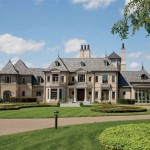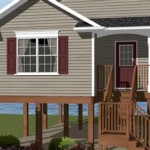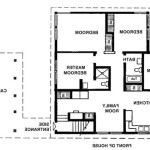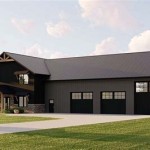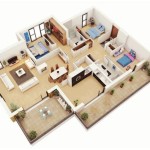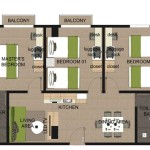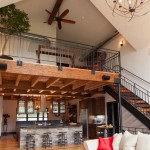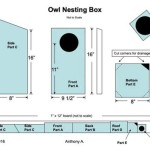French Cottage Style House Plans: A Comprehensive Guide
French cottage style house plans evoke a sense of rustic charm, elegance, and warmth, drawing inspiration from the idyllic countryside of France. These designs, often referred to as "French Country" or "Provencal," are characterized by their use of natural materials, intricate details, and a focus on creating a comfortable and inviting living space. This article aims to provide a comprehensive overview of French cottage style house plans, exploring their key features, design elements, and considerations for those seeking to build or renovate a home in this timeless architectural style.
Defining Characteristics of French Cottage Style
French cottage style distinguishes itself through a specific set of architectural features that create its signature aesthetic. These homes are not merely structures; they are carefully crafted spaces designed to reflect a sense of history and connection to the natural world.
One defining feature is the asymmetrical facade. Unlike symmetrical designs often found in other architectural styles, French cottage homes frequently exhibit an off-center entrance and varied window placements. This deliberate asymmetry contributes to the perceived authenticity and rustic charm of the house, giving it an organic and lived-in feel.
Roofs are typically steep-pitched and often hipped or gabled, adding visual interest and allowing for ample attic space. These roofs are commonly clad in materials such as slate, tile, or wood shingles, further enhancing the rustic aesthetic. The roofline is an important element, dramatically shaping the overall appearance of the home.
Windows play a crucial role in defining the architectural style. Tall, narrow windows, often with multiple panes, are characteristic of French cottage designs. Shutters, typically decorative, add another layer of visual appeal and contribute to the perceived warmth of the home. These windows are designed to allow ample natural light to flood the interior, creating a bright and airy atmosphere.
Exterior materials are generally natural and locally sourced, reflecting the region's available resources. Stone, brick, stucco, and wood are common choices. The use of these materials contributes to the rustic and durable nature of the home. These materials also help the home blend seamlessly with its surrounding environment.
Arches are frequently incorporated into the design, often used for doorways, windows, or interior passages. These arches soften the lines of the structure and add a touch of elegance. The gentle curve of an arch offers a visual contrast to the straight lines and angles typically found in other parts of the design.
Landscape design is also integral to the French cottage aesthetic. Gardens are typically informal and overflowing with flowers, herbs, and climbing vines. Gravel pathways, stone walls, and water features further enhance the rustic charm of the property. The landscape is designed to be an extension of the home's interior, blurring the lines between inside and outside living.
Interior Design Elements in French Cottage Homes
The interior of a French cottage style home is designed to be as inviting and charming as the exterior. The focus is on creating a comfortable and functional living space that reflects a sense of history and tradition.
Exposed beams are a common feature, adding warmth and character to the interior. These beams can be original to the structure or added as a decorative element. They often run across the ceiling, providing a visual reminder of the home's construction and adding a rustic touch.
Hardwood floors, often distressed or aged, are another characteristic element. These floors add warmth and texture to the space. Wide planks and natural finishes are common choices, creating a sense of authenticity and history.
Fireplaces are typically a focal point in the living room, providing warmth and ambiance. They are often constructed of stone or brick and can be either wood-burning or gas-fueled. The fireplace serves as a gathering place for family and friends, adding to the cozy and inviting atmosphere of the home.
Kitchens are designed to be functional and inviting, often featuring farmhouse sinks, open shelving, and butcher block countertops. These kitchens are meant to be the heart of the home, a place for cooking, gathering, and creating memories. The use of natural materials and traditional elements creates a warm and welcoming space.
Color palettes tend to be soft and muted, with shades of cream, beige, gray, and pale blue dominating the space. These colors create a calming and relaxing atmosphere. Accents of bolder colors, such as mustard yellow or deep red, can be used to add visual interest and personality.
Furnishings are often a mix of antique and vintage pieces, adding to the sense of history and character. Overstuffed sofas, comfortable armchairs, and rustic tables create a warm and inviting living space. These furnishings are chosen for their comfort, durability, and ability to tell a story.
Fabrics are typically natural and textured, such as linen, cotton, and wool. These fabrics add to the overall sense of warmth and comfort. Floral prints and toile patterns are also common choices, adding a touch of French Country charm.
Key Considerations When Choosing a French Cottage Style House Plan
Selecting the right French cottage style house plan requires careful consideration of several factors, including budget, site conditions, lifestyle, and desired features. A well-thought-out plan will ensure that the finished home meets the specific needs and preferences of its owners.
Budget is a primary consideration. The cost of building a French cottage style home can vary depending on the size, materials, and level of detail. It is important to establish a realistic budget and to work with a builder who understands the specific requirements of this architectural style. Costs can be managed by choosing less expensive materials, simplifying the design, or phasing the construction over time.
Site conditions also play a significant role. The topography, soil type, and climate of the building site will influence the design of the home. For example, a home built on a sloped site may require a different foundation than a home built on a level site. Similarly, a home built in a cold climate will require more insulation than a home built in a warm climate. The house plan should be adapted to the specific characteristics of the building site.
Lifestyle is another important factor to consider. The house plan should reflect the way the owners intend to live in the home. For example, a family with young children may need a different layout than a retired couple. The number of bedrooms, bathrooms, and living spaces should be carefully considered, as well as the overall flow of the home. The house should be designed to accommodate the daily routines and activities of its occupants.
Desired features should also be taken into account. This includes things like a gourmet kitchen, a large outdoor living space, a home office, or a finished basement. These features will add to the cost of the home, but they can also significantly enhance its value and enjoyment. It is important to prioritize the features that are most important to the owners and to incorporate them into the house plan.
Energy efficiency is an increasingly important consideration. French cottage style homes can be designed to be highly energy efficient by incorporating features such as solar panels, geothermal heating, and energy-efficient windows and appliances. These features will reduce the home's environmental footprint and lower its operating costs. Sustainable design practices are increasingly integrated into French cottage style homes.
Local building codes and regulations must also be considered. These codes and regulations can vary depending on the location of the building site. It is important to work with a builder who is familiar with the local codes and regulations and who can ensure that the home is built in compliance with all applicable rules. Ignoring building codes can result in costly delays and fines.
Resale value is another factor to consider. While the primary focus should be on creating a home that meets the owners' needs and preferences, it is also important to consider the potential resale value of the home. A well-designed and well-maintained French cottage style home can be a valuable asset. Features that enhance resale value include a well-designed kitchen, updated bathrooms, and a desirable location.
Dream French Country House Plans Floor Designs

French Country House Plans Modern Luxury Rustic Small

The French Quarter Madden Home Design Designer House

French Country House Plans Style Home

French Country Style House Plans For Classic 3 Bedroom Home

Plan 48033fm Petite French Country Cottage House 1759 Sq Ft Plans Style

French Country House Plans Modern Luxury Rustic Small

One Story French Farmhouse Style House Plan 9896

French Country House Plans

Beautiful French Country Style House Plan 6381 Quarter Plans
Related Posts

